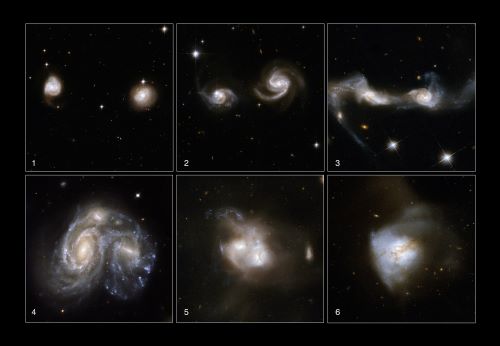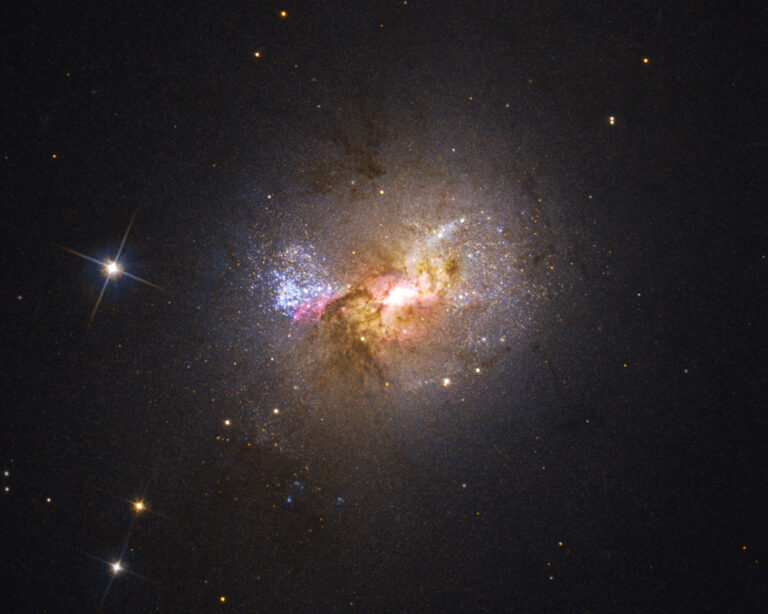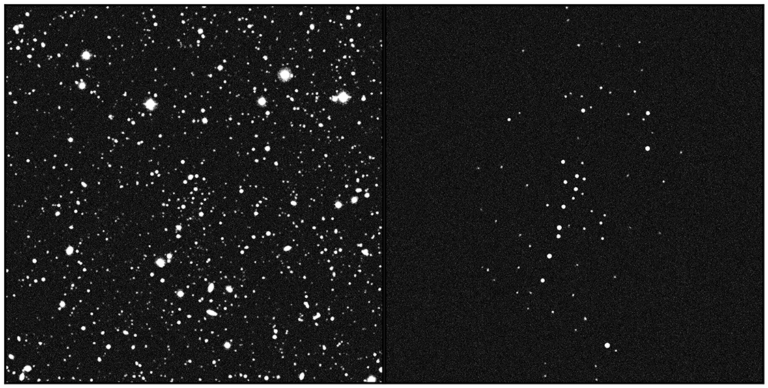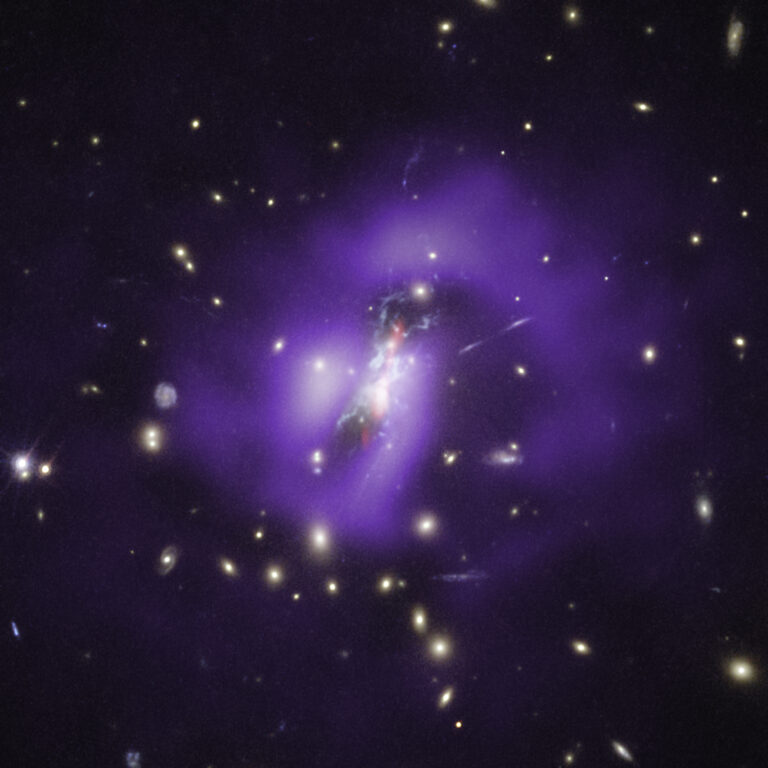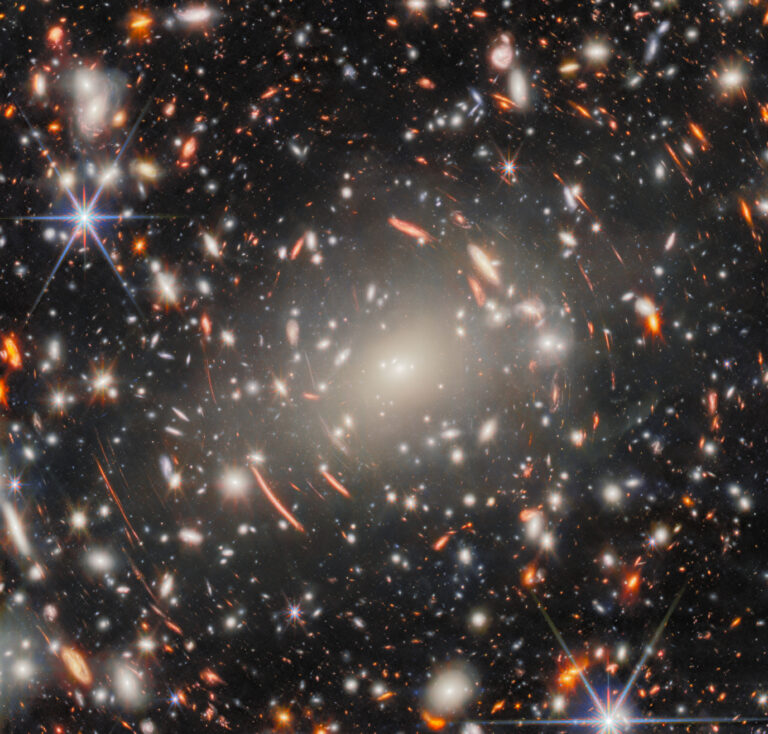Key Takeaways:
- Colliding spiral galaxies are pulled apart by gravity.
- This stretching destroys the original spiral shapes.
- The merger creates a single, elliptical galaxy.
- Most gas is used up in a burst of star formation.
Q: Why do two colliding spiral galaxies form an elliptical galaxy rather than one larger spiral galaxy?
A: When two spiral galaxies collide, gravity is the main force that comes into play. As the galaxies approach each other, gravitational forces start to pull the stars, gas, and dust of the spiral arms out of their original orbits. This is what causes the warped shape of famously interacting pairs such as the Mice (NGC 4676) and the Antennae Galaxies (NGC 4038 and NGC 4039). It is also what ultimately destroys the initial spiral patterns of the two galaxies and results in an elliptical galaxy once the merger is complete.
Galaxy collisions aren’t typically one-and-done events — galaxies don’t approach each other, smack together, and stick. Instead, depending on their initial trajectories as they approach one another, two galaxies may pass by or even through each other several times over the course of billions of years before they finally merge. This repeated interaction pulls the spirals apart a bit like stretching taffy, yanking at the stars that once serenely circled the center of their home galaxy in an orderly fashion. During the merger, the stars become scattered and their orbits become random. This is what results in a single, football-shaped elliptical galaxy with stars orbiting the center in all planes, rather than the single plane of a flat spiral galaxy.
Elliptical galaxies are also known for their dearth of star-forming material. This is because when spirals — which typically contain plentiful gas with which to make new stars — collide, gravity also triggers that gas to quickly condense and form stars all at once in a single big burst. Such starbursts, as astronomers call them, use up the gas so that by the time the merger has finished, it has little material for new stars. What gas remains is too hot and spread out to condense into new stars or clump together into new spiral arms. Instead, the elliptical galaxy remains puffed up and its components keep their randomized orbits, never again settling into a spiral shape.

